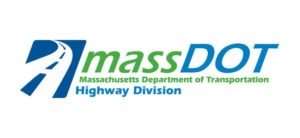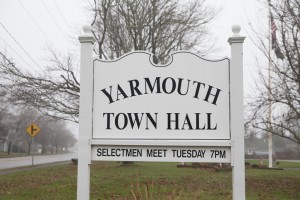
An example of a cable-stayed style bridge that could span the Cape Cod Canal in the future. Other potential designs can be found below. MassDOT.
BOURNE – The Massachusetts Department of Transportation outlined the future of the replacements for the Cape Cod Canal Bridges during two virtual forums this week.
Officials showcased potential designs ranging from familiar arches to minimal flat-topped roadway.
Lead Engineer John Smith says they are trying to balance durability, cost and community character as they narrow down designs.
One option is for a more familiar-looking arch truss design, which features several advantages including the ability to have the main structure built offsite and floated in when appropriate, cutting down on construction time and cost.
Smith added that it is most visually similar to the historic Sagamore and Bourne bridges, as well.
On the opposite end of the aesthetic spectrum is the concrete box style—flat roadway on top without a form of “gateway” structure for drivers to pass through, but sturdy against high winds during and after construction.
The third design is cable-staying towers at the canal’s edges supporting the bridge—visually similar to Boston’s Zakim Bridge—which could be more expensive as well as pushes back where on and off-ramps can be connected.
Regardless of the final design, Smith said that the project will utilize twin bridges at each connection—four in total over the canal—allowing traffic to be maintained during construction, as well as being more cost-efficient.
“Intuitively it seems like building two bridges would cost more than one, but our analysis shows the opposite. That the narrower twin structures have so many advantages for fabrication, erection and staging that they actually will be more cost-efficient than building a single wider bridge at each location,” said Smith during the meeting Thursday.
“While this first bridge is under construction, including the tie-ins to the local roadways on each side, it’s far enough away that it won’t affect the travel on the existing bridge. You’ll have the same travel method that you do now as far as going over the bridge and coming back. All your connections.”
Though the potential designs each showed an added lane, officials emphasized that the designs are in their earliest stages, and any lane additions would be aimed at improving on and off-ramp use, rather than add traffic capacity to the area.
“They’re basically turning lanes,” said MassDOT Program Manager for the Cape Cod Bridges Program Bryan Cordeiro during the forum.
Officials said that they have not yet planned any property takings, though added that all proper procedures would be followed.
The project is anticipated to cost about $4 billion, however a specific source of federal funding has not yet been secured.
Primarily, officials have been seeking funds through President Joe Biden’s Infrastructure Investment and Jobs Act.
“Although there’s over a trillion dollars available through the Act, most of that funding is awarded on a competitive basis to projects across the entire country and is only awarded to projects that best meet the criteria of what we call the notice of funding opportunities,” said Cordeiro.
Upon completion, the responsibility for the bridges is expected to move from the U.S. Army Corps of Engineers to the state.
More meetings will be held in early 2023. Residents can make their voices heard on the project through MassDOT’s website.
Other potential bridge designs can be found below:

Arch style. MassDOT.

Concrete box style. MassDOT.
























